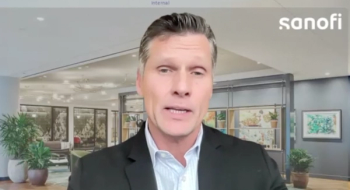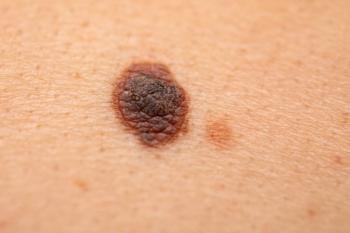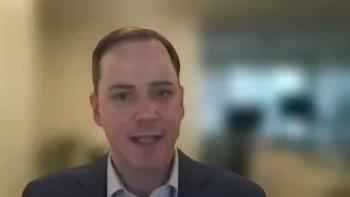
Antidepressant drug pipeline: What to know
There are promising developments in the pipeline for patients with treatment-resistant depression.
Depression is one of the most common mental disorders in the United States, affecting approximately 6.7% of adults each year, according to the Anxiety and Depression Association of America.
Depression also takes a heavy economic toll. In 2010, the estimated economic burden of depression, including workplace costs, direct costs, and suicide-related costs was $210.5 billion, according to a
“Depression is
Current treatments
Antidepressants are a popular treatment choice. Although they may not cure depression, antidepressants can reduce symptoms, such as low mood, anxiety, and decreased energy.
According to Farrah Wong, PharmD, director of pipeline and drug surveillance at OptumRx, about one in every 10 Americans, aged 12 years and older, takes an antidepressant medication. Of those individuals, more than 60% have been taking it for longer than two years, and 14% take more than one antidepressant.
The main medications used to treat depression include selective serotonin reuptake inhibitors (SSRIs), serotonin and norepinephrine reuptake inhibitors (SNRIs), tricyclic antidepressants, bupropion, mirtazapine, and adjunctive therapies such as atypical antipsychotics.
“Despite a large armamentarium of pharmacotherapy used to treat depression, only 60% to 70% of patients with depression respond to antidepressant therapy,” says Wong. “Of those who do not respond, 10% to 30% exhibit treatment-resistant symptoms coupled with difficulties in social and occupational function, decline of physical health, suicidal thoughts, and increased healthcare utilization.”
Patients diagnosed with MDD are defined as having treatment-resistant depression if their depression has failed two or more antidepressant therapies. These patients pose a major therapeutic challenge to mental health experts as they require specialized treatment-resistant management.
The global anxiety disorder and depression treatment market stood at $22.5 billion in 2013 and is expected to decrease to $18.2 billion by 2020, according to a
Although the market is experiencing diminished spending in antidepressant drugs, insurance coverage is improving. According to Ambres, mental health parity laws have changed how behavioral conditions are covered. The share of total mental health treatment expenditures financed by private insurance, Medicare, and Medicaid increased from 44% in 1986 to 68% in 2014, according to a
In the pipeline
Pharmaceutical Research and Manufacturers of America (PhRMA) lists several antidepressants undergoing phase 3 trials for the treatment of depression. Some of these drugs are already on the market and seeking additional indications for depression. For example, cariprazine (Vraylar, Allergan and Gedeon Richter Plc) was approved by FDA in 2015 for the treatment of schizophrenia and mania associated with bipolar disorder. The manufacturers are seeking an indication as an adjunctive treatment for MDD, according to PhRMA.
“As many blockbuster antidepressants have gone generic in the last decade-for example, Prozac, Zoloft and Cymbalta-the late-stage antidepressant pipeline has been rather sparse,” says Wong. “However, we are seeing drugs in development for treatment-resistant depression, including esketamine, and dextromethorphan bupropion [AXS-05].”
Esketamine (Janssen Pharmaceuticals) is a chemical variant of ketamine that acts as an N-Methyl-D-aspartate (NMDA) receptor antagonist to ameliorate depressive symptoms. Esketamine has been granted fast-track designation by FDA for MDD. Researchers are currently recruiting participants for a safety and efficacy study of intranasal esketamine for use in treatment-resistant depression.
AXS-05, an oral combination of dextromethorphan and bupropion developed by Axsome Therapeutics, is also in late-stage testing for treatment-resistant depression and other central nervous system (CNS) disorders. Both drugs have CNS activity, and when used together, bupropion is thought to increase the bioavailability of dextromethorphan.
Another pipeline treatment currently being evaluated for its use in MDD is rapastinel (formerly known as GLYX-13, Allergan), an investigational intravenous formulation of a novel NMDA receptor partial agonist. Rapastinel will be manufactured as a pre-filled intravenous syringe that can be administered in under one minute. Rapastinel received breakthrough therapy designation from FDA for adjunctive treatment of MDD. This follows the fast-track designation for rapastinel granted by the FDA in 2014.
Because rapastinel is administered intravenously, it will likely be covered as a medical benefit drug and may incur additional costs, such as facility fees and administration fees, says Wong.
“Many of the SSRI and SNRI drugs have generic options that have diminished spending in the area of antidepressants,” says Ambres. “Introduction of new drugs could boost some of the spending again for treating depression on the margins, since there are so many antidepressants available.”
Future challenges
Treatment-resistant depression continues to challenge mental healthcare providers, and Wong believes that drugs being studied for this use may provide promising clinical benefits and additional therapeutic options.
According to Andrew Lyle, director of business development at Curexa Pharmacy, the future for this category is going to include biologic injectables and repurposing older drug classes to treat depression. For example, onabotulinumtoxinA (Botox, Allergan) is currently in phase 2 for treatment of depression.
“With the increase in drug prices, sprawling indications, and an increase in biologic injectables, specialty pharmacies will have to begin to play a major role in the dispensing of these drugs,” says Lyle. “The biggest threat to the patient and insurers is non-adherence. Specialty pharmacies that are URAC-accredited and Accreditation Commission for Health Care-accredited are required to do patient training, clinical follow-up and proactive refills. This will in terms help the patient stay adherent to their medication. That is a win-win for payers and patients.”
Another trend that Lyle predicts is finding new indications for existing depression treatments. One example is flibanserin (Addyi, Sprout Pharmaceuticals), indicated for hypoactive sexual desire disorder [HSDD].
“In reality, this drug at its core is very similar to an SSRI, such as Prozac,” says Lyle. “While standard SSRI’s raise the levels of the neurotransmitter serotonin, Addyi blocks certain receptors from responding to the increased levels of serotonin. Because Addyi is so similar to an SSRI, it is already positioned to be used in other ‘mental health’-type conditions such as postpartum depression.”
Mental health is still relatively undertreated, despite benefit parity laws, Ambres says.
“As a society, we need to remove some of the stigmas associated with mental health to guide people to seek treatment,” she says. “A holistic approach to patient care can assist those patients whose depression is interfering with the treatment of other illnesses. Antidepressants paired with psychotherapy can help patients overcome barriers in managing chronic illnesses.”
Erin Bastick, PharmD, RPh, is a graduate intern at University Hospitals Elyria Medical Center in Elyria, Ohio.
Newsletter
Get the latest industry news, event updates, and more from Managed healthcare Executive.




















































